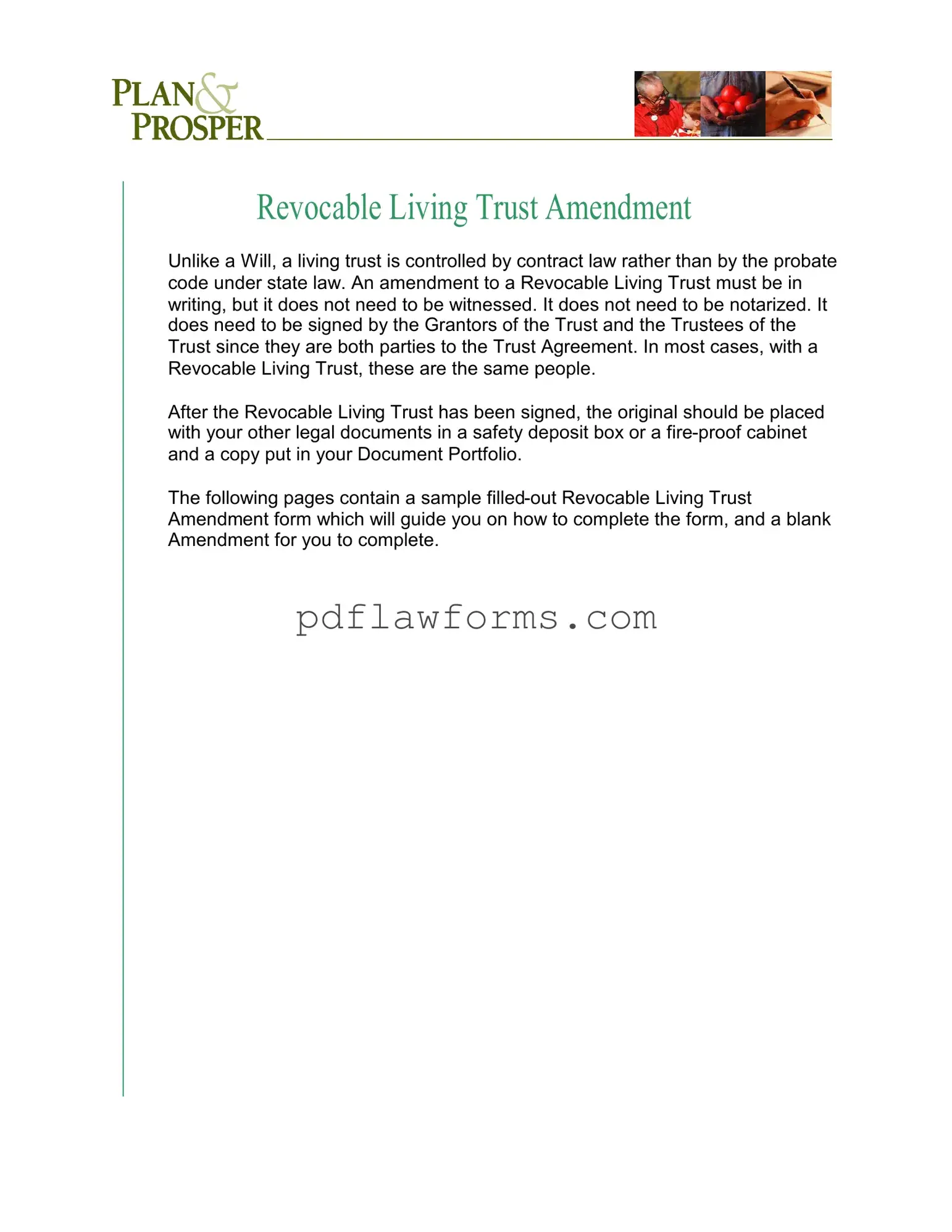Making changes to a Revocable Living Trust can be a straightforward process, thanks to the Trust Amendment form. This form allows Grantors and Trustees to modify the terms of their trust without the formalities required for a Will. Unlike a Will, which is governed by probate laws, a living trust operates under contract law, making it more flexible. To amend a Revocable Living Trust, the amendment must be in writing, but it doesn't require witnesses or notarization, which simplifies the process. The key players—the Grantors and Trustees—must sign the document, and in most cases, these roles are held by the same individuals. Once the amendment is completed, it should be securely stored alongside other important legal documents, ensuring easy access when needed. This article will guide you through the essential components of the Trust Amendment form, providing a sample filled-out version and a blank form for your own use. Understanding how to navigate this form can empower you to manage your trust effectively, keeping it aligned with your current wishes and circumstances.
